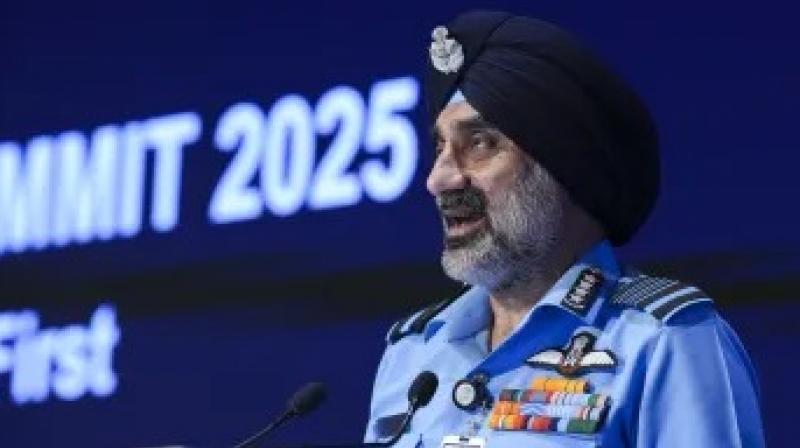
frankness shown by him should not ...as criticism of defense manufacturing organizations but rather as an attempt to shake them up.
Editorial: Operation Sindhoor’s success despite, Indian Air Force Chief, Air Chief Marshal Amar Preet Singh has not given up his frankness. In defense matters laxity against, through clear statements, he has been sending this message to government leaders and bureaucrats since February that without modern war equipment even the bravest army cannot win wars. He started this series during Bangalore Aero Show.
At that time, while touring Hindustan Aeronautics Limited (HAL) Bangalore campus, he reminded the managers of this ‘Navratna’ government sector enterprise that the first batch of Tejas fighter jets promised to be supplied by 31 December 2024, was not delivered by this organization, and the Indian Air Force did not get even a single aircraft of this batch within the deadline (even after the deadline was extended twice). He insisted on timely delivery from HAL and all ‘defense’ companies and warned that if these companies do not learn to stick to deadlines soon, the Air Force will start looking for sources outside India to fulfill its needs.
On Thursday, participating in CII business summit in New Delhi in the presence of Union Defence Minister Rajnath Singh, the Air Chief Marshal repeated his February commitments. He also again raised the issue of shortage of modern military equipment and inefficiency of Indian industrial organizations and said that deadlines set for military projects should be considered ‘sacred.’ Every project should have the skill and excellence of completion within the set time as the sole goal of defense-related organizations. Government sector organizations have been notorious for ignoring such goals. This negligence is now also impacting private organizations related to defense.
They too have started ignoring deadlines. He warned that "This trend will no longer be tolerated. The black sheep will be identified very soon." It is noteworthy that to effectively protect the borders adjoining China and Pakistan, the Indian Air Force needs at least 42 fighter squadrons, but currently it has fighter aircraft only for 30 squadrons. It had contracted HAL in 2021 for the supply of 83 Tejas fighter jets. Similarly, under another contract, HAL was to start supplying 70 basic trainer aircraft (HTV-40) from September this year, but progress is very slow in this direction as well. In such a situation, if the Air Chief’s temper is rising, no one should find fault with him.
Operation Sindhoor has made it clear that wars in today’s times are not fought in traditional ways. They are fought with technology. Pakistan’s Prime Minister Shehbaz Sharif on Thursday clearly admitted in Azerbaijan that use of BrahMos missiles by India led Pakistan towards ceasefire. These missiles immediately made the military airbases located at Nur Khan (Rawalpindi), Shah Murid (Chaklala), and Rahim Yar Khan (Sargodha) unusable. Referring to this incident, Air Chief Marshal Amar Preet Singh said that if the Indian Air Force did not have the necessary technology to use BrahMos, this missile would not have become a ‘Brahmastra.’
Overall, the frankness shown by him should not be considered as criticism of defense manufacturing organizations but rather as an attempt to shake them up. Organizations like DRDO or HAL have been known to work slowly, but the time for showing slowness is over. If the Air Chief’s harsh statements prove effective in turning sluggishness into alertness, it will be beneficial for the nation as well as for these organizations.













